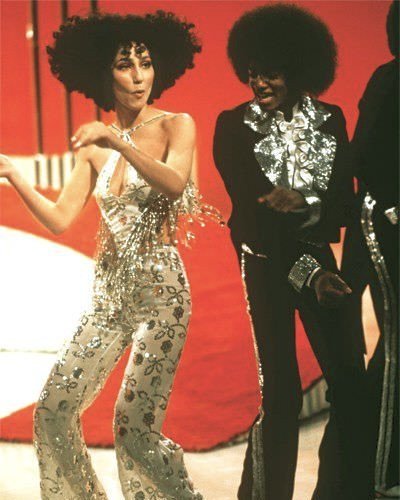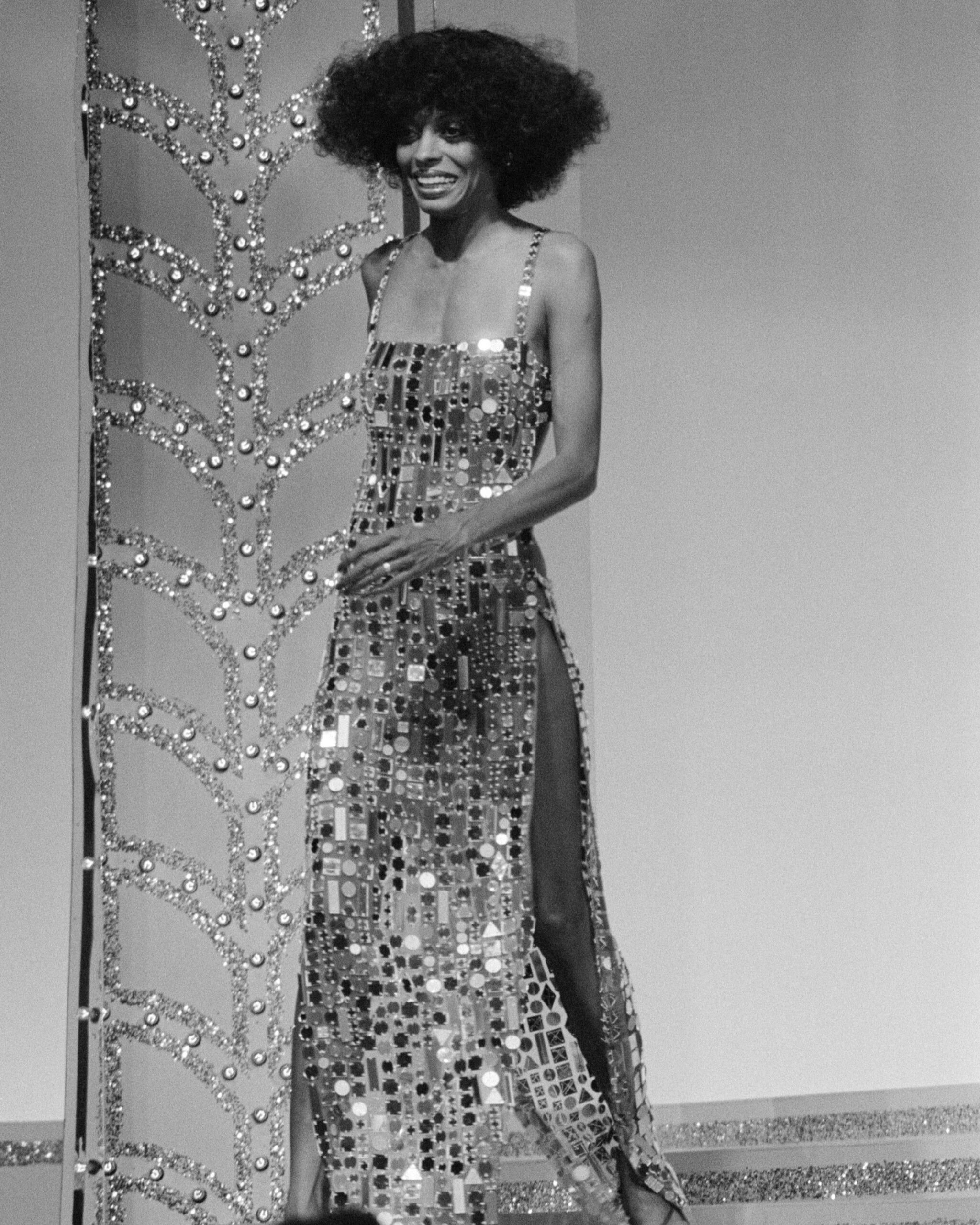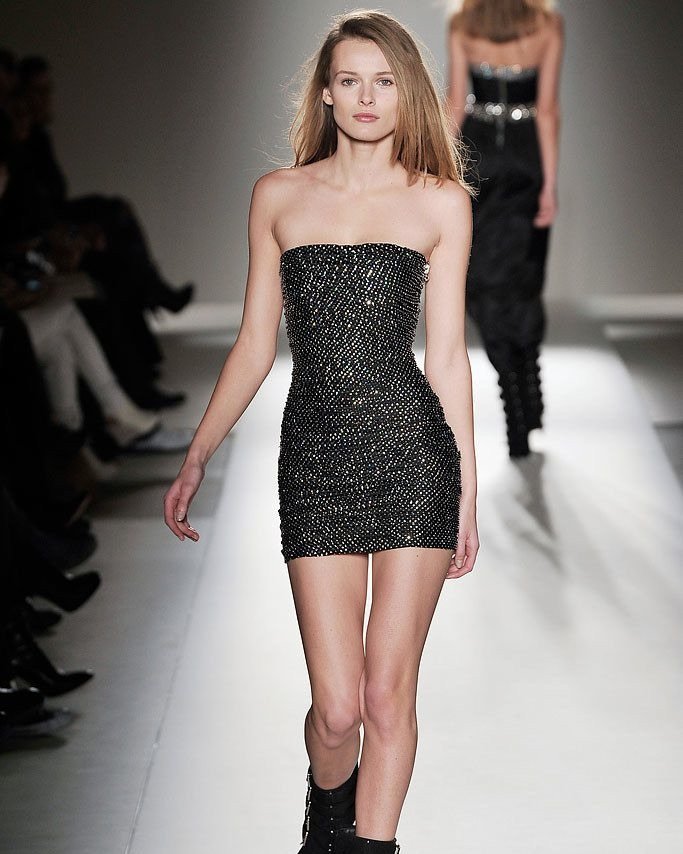The Glitter Index: What Does Sparkly Fashion Say About Financial Recessions?
We knew this was coming. Three years out from that pesky global pandemic that changed everything forever, a recession may finally catch up to us. But if our economy is doing poorly, why is the fashion in my local shopping mall so sparkly? Let’s unpack it.
The Great Depression and Hollywood Glamour
When we think of periods of economic distress we usually envision those Great Depression documentaries our 6th grade teachers put on instead of a lesson plan, which, fair, but even the 1930s didn’t mean depressing fashion, at least not for everyone. Those impacted the most may have worn the standard dress at the time, but celebrities adopted their own set of fashion standards.
The 30s were the golden age of Hollywood in a time when the public needed an escape from the harsh realities of their financial situations. 1929 saw the first year of the sound era. Up until this point film was strictly silent, but as the U.S. economy was taking a tailspin, the film industry was making huge technological strides resulting in sound-inclusive movies: the talkies. This innovation coinciding with the stock market crash of ‘29 meant movie studios needed to act fast before the film industry tanked alongside all other major industries of the time.
Movies in this era were showy and ornate spectacles, an ironic thought considering this period was influenced by general gloom and despair. However, movies allowed a defeated public to forget about their troubles and focus on the beauty of spectacle. This glamorous escapism saw fashion trends such as bias cut gowns, exaggerated shoulders, cinched waists, fur, costume jewelry, and, of course, glitter. These styles allowed audiences to live through the fashionable lifestyles depicted on the silver screen.
While in this period the public did not adopt the fashion of their favorite movie stars, it’s important to assess why. The mass manufacturing of apparel as we know it today did not exist in the 30s. The average dress in 1935 cost about $8 with the average monthly earnings coming in at a little under $80. Now let me blow your mind. That $8 dress would cost $173 today on a monthly income of $1,733. This is especially shocking when considering the cost of living was an estimated $4,000. It’s no wonder the public didn’t splurge on shiny new apparel.
70s Disco Fever
Let’s fast-forward a bit to disco balls and the 1970s. The start of the decade signaled an end to post-WWII economic expansion and the start of a western recession lasting from 1973 to 1975, though its effects lasted into the 80s. This was a time of social upheaval, war, poverty, civil unrest, racial protests, and a promise that those coming of age at the time wouldn’t be as well off as their parents. History repeats itself, yadda yadda yadda.
At the same time as this economic and societal downturn, though, the Bee Gees emerged from a disco ball, or something like that. Disco was born. The music evolved from the Philly Afro/Latino R&B scene and the New York underground dance community. Typified by synthesizers, beats, horn sections, and electric piano, disco was made for dancing, and the clothing reflected that notion.
Fashion trends at the time favored bold colors and body conscious silhouettes featuring rhinestones, sequins, feathers, and, drumroll please, glitter.
Disco music and its resulting fashion influence liberated its audience of marginalized, working-class people. The funky beats and carefree attitude provided a sense of escapism during a period of financial uncertainty. And because clothing was cheaper and more accessible, the public could actively participate in the trends of the time.
The Late Aughts and The Clubbing Era
That brings us to the aughts, an era of tabloids, reality TV, Paris Hilton, and the Great Recession. The 2000s were heavily impacted by Y2K and the tech boom that filled closets with shiny blacks fabrics and colorful metallics. The 2008 recession resulted in 8.7 million Americans losing their jobs and a general negative financial impact for the U.S. economy.
Although the attitude of the time wasn’t great, (ask any late 90s, early 00s baby how many times they overheard their parents yelling about money as they played Wii Sports Resort) a hot new music genre entered the scene.
Breakout artist Lady Gaga released her escapist anthem “Just Dance,” a song of a generation down on their luck. The song describes Gaga forgoing her problems and instead dancing her worries away. The emergence of club music pushed the narrative that life is what you make of it, so dress like it. So, the 2000s look focused on embellished rhinestones, chunky costume jewelry, bubble skirts, lack of brand labels, and statement pieces. OMG I almost forgot, glitter too.
In the midst of the largest economic downturn since the Great Depression, moments of carefree fun and a “Just Dance” attitude resounded through the public.
Great Recession Number 2: Electric Boogaloo
That brings us to today. If we adhere to the standard definition of a recession, two consecutive quarters of economic downturn, then the U.S. entered a recession in the summer of 2022. However, the National Bureau of Economic Research, a nonprofit tasked with citing a recession, has yet to name one as of October 2022. But, if we look at what’s hitting the shelves in fashion departments across the country and what I am referring to as the Glitter Index, one may be looming.
The Glitter Index is the phenomenon of a rise in sparkly, showy fashion signaling a period of economic downturn. It’s similar to the lipstick effect, the theory that in times of economic crisis consumers are less willing to make large purchases and more likely to spend on lower-cost frivolous items like lipstick, nail polish, and perfume.
The Glitter Index is a mark of escapism for the worried public. Walk into any trendy apparel retailer and shoppers will find sparkle, chrome, and metallics galore. It appears that stores are pushing a dancy, escapist aesthetic to a public facing major financial inflation.
This is especially interesting given the sudden reintroduction of house music like Beyoncé’s 2022 release “Renaissance” and opulent films like Baz Luhrmann’s “Elvis” hitting theaters. To top it off, we’re seeing a return to 70s nostalgia in both fashion and nightlife, with new dance clubs popping up in major U.S. cities and the introduction of concert-style dance parties a la Gimme Gimme Disco.
We are a public who have lived in uncertainty for 3 years, it only makes sense that we re-adopt the carefree facade of recessions past. If one thing is for certain, it’s that escapism will never die.











